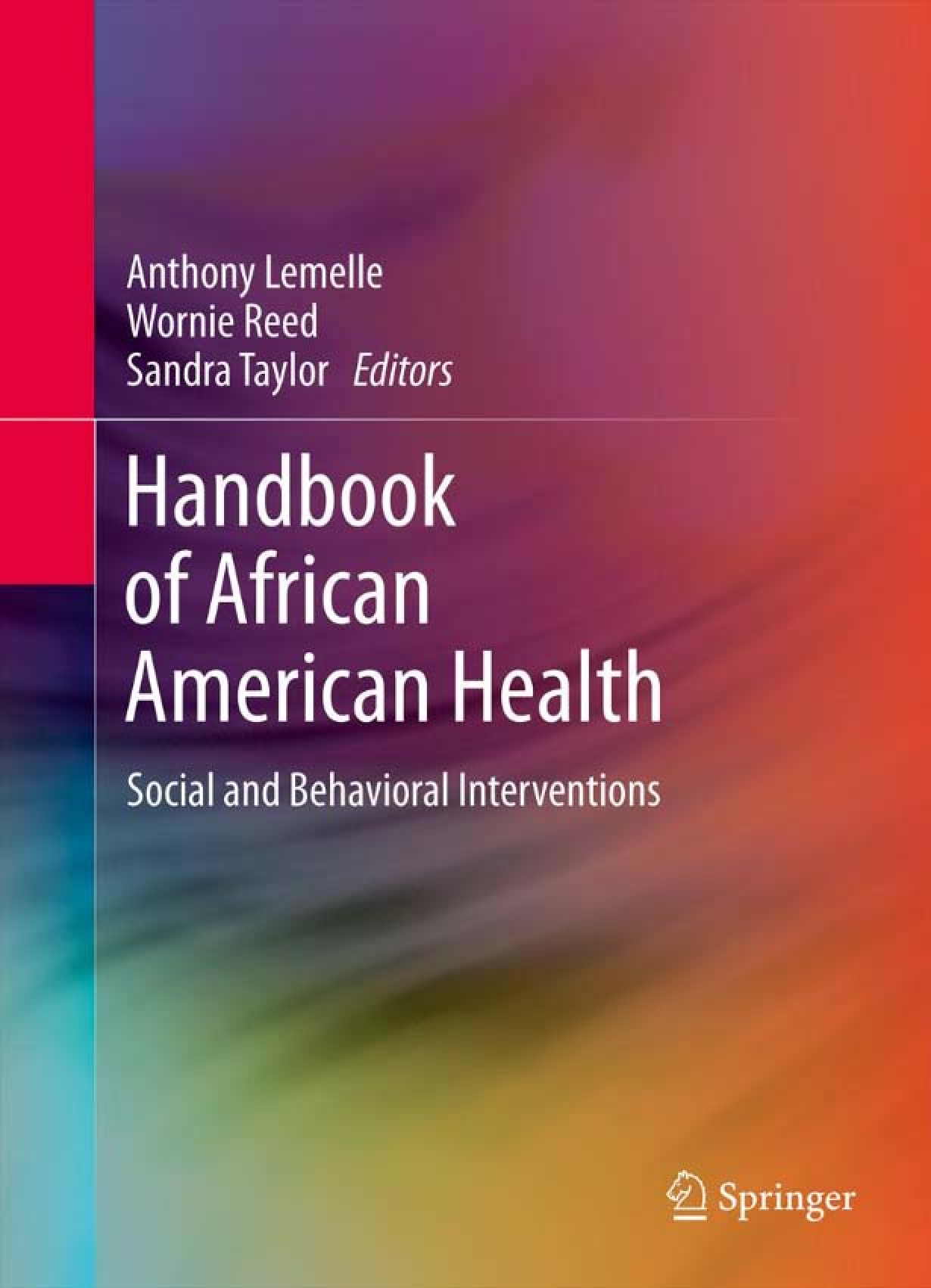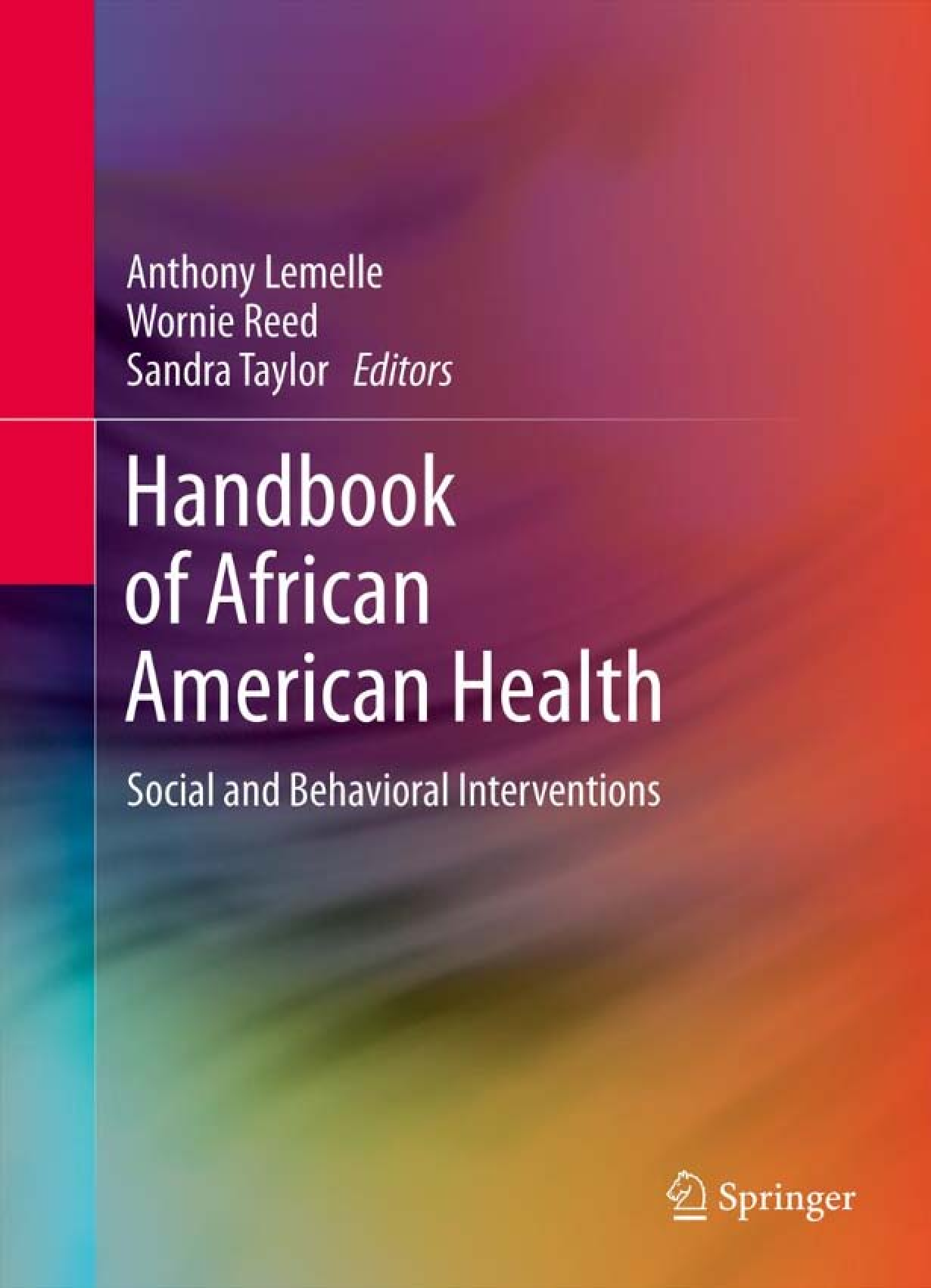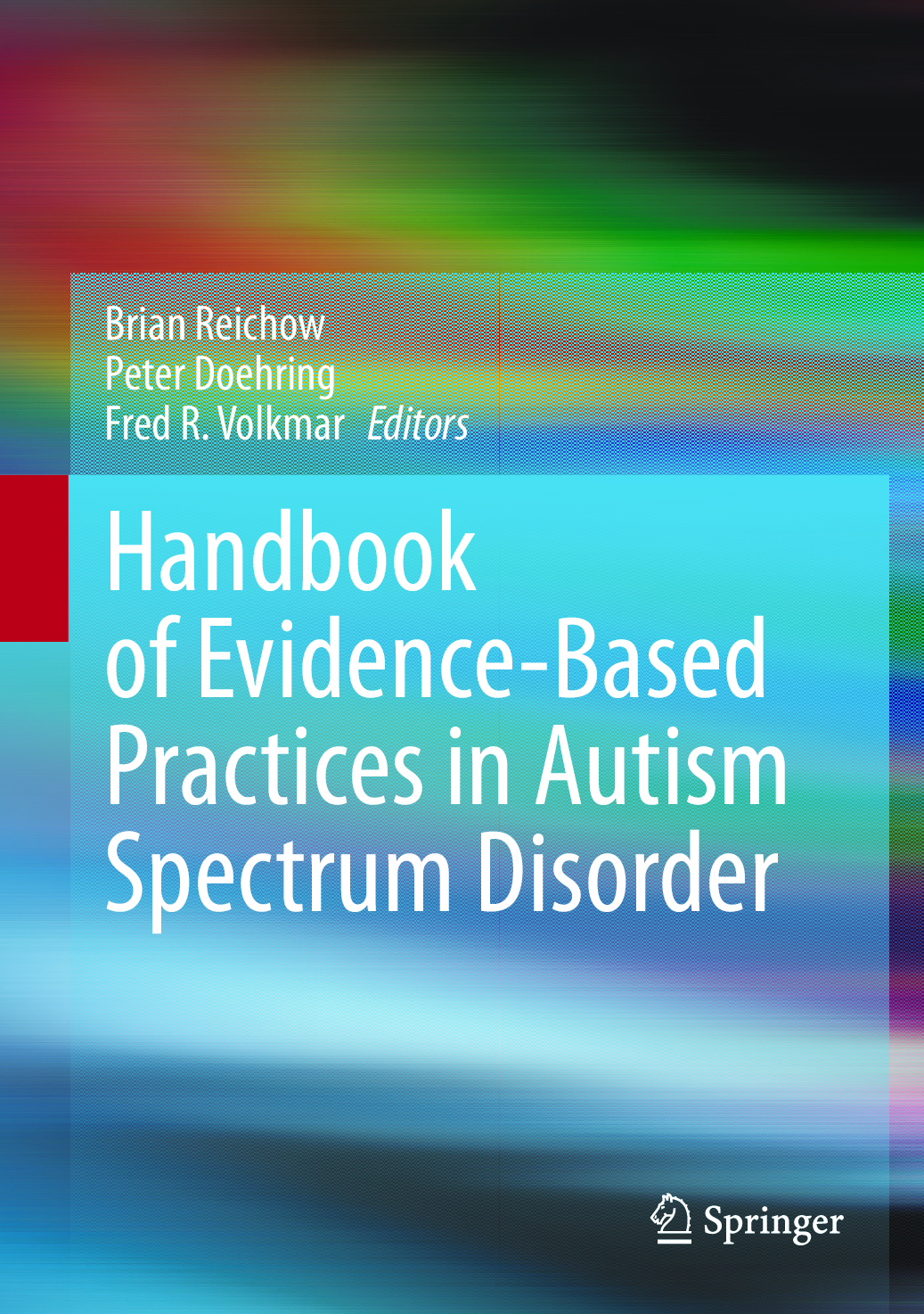*NURSING > eBook-PDF > African American Women and Breast Cancer_2022/2023 | Social and Behavioral Interventions | Handbook (All)
African American Women and Breast Cancer_2022/2023 | Social and Behavioral Interventions | Handbook of African American Health
Document Content and Description Below
African American Women and Breast Cancer Social and Behavioral Interventions Handbook of African American Health Part I Background of Social and Behavioral Health Disparities Interventions Among... African AmericansA.J. Lemelle et al. (eds.), Handbook of African American Health: Social and Behavioral Interventions, 3 DOI 10.1007/978-1-4419-9616-9_1, © Springer Science+Business Media, LLC 2011 A.J. Lemelle (*) Department of Sociology, John Jay College, City University of New York, NY, USA e-mail: alemelle@jjay.cuny.edu Introduction The purpose of this handbook is to share information about evidence-based approaches for the reduction of health disparities in the USA. It brings information about intervention research that affects African Americans. For this project, there are three initial concepts: African Americans, health disparities, and intervention. This chapter reviews selected literature to provide definitions and framing. In this process, the chapter offers conceptual, operational, and theoretical reconsiderations. African Americans and Health Disparities There are at least three conceptual, empirical, historical problems associated with the concept African American. The literature on African Americans (1) generally divides the concept of African American as an externally imposed identity, internally developed identity, or as an identity that comes from processes of social reaction, internalization, and identification (Cross, 1991; Hacker, 1992). Moreover, (2) the concept has different meanings across time (Yancey, 2003). For example, colored, Negro, black, and African American are terms that recent history used to identify African Americans. Social scientists usually distinguish between ethnicity and race; nonetheless, throughout US history, colloquially US Americans have understood the notion of US Americans from Africa as referring to a racial group. In fact, some scholars make it clear that black and white distinctions represent the racial classes in the USA (Marx, 1998; Steinberg, 2007). Moreover, (3) we can quickly discern the nomenclature equivocation within the term African American; immigrants from Botswana living in the USA and having US citizenship would become confused with descendants of slaves whose cultural characteristics marginally survived experiences with the transatlantic slave trade and US organized slavery (Fullilove, 1998). From a scientific standpoint, the concept becomes virtually meaningless. Imagine that we conceptualized the term to mean anyone with at least onedrop of African blood (Lemelle, 2007); the confusion would escalate since we know that “biracial” experience is different in some ways from uniracial experience. Chapter 1 Conceptual, Operational, and Theoretical Overview of African American Health Related Disparities for Social and Behavioral Interventions Anthony J. Lemelle4 A.J. Lemelle One way around some of the confusion is to recognize racial/ethnic classification as pragmatic political constructs. For example, the U.S. Census Bureau provides the following definition: The concept of race as used by the Census Bureau reflects self-identification by people according to the race or races with which they most closely identify. These categories are sociopolitical constructs and should not be interpreted as being scientific or anthropological in nature. Furthermore, the race categories include both racial and national-origin groups. The racial classifications used by the Census Bureau adhere to the October 30, 1997, Federal Register Notice entitled, “Revisions to the Standards for the Classification of Federal Data on Race and Ethnicity” issued by the Office of Management and Budget (OMB) (U.S. Census Bureau, 2000). Moreover, when the Census Bureau refers to African Americans, agents also use the term black. The official definition is, “Black or African American. A person having origins in any of the Black racial groups of Africa. It includes people who indicate their race as “Black, African Am., or Negro,” or provide written entries such as African American, Afro American, Kenyan, Nigerian, or Haitian” (U.S. Census Bureau, 2000). Speaking generally, given the scientific imprecision of the Census Bureau’s definition, this handbook adheres to its definition. The most salient aspect of the definition is its reliance on self-identification. In addition to categorical problems with the concept, some of which were worth mentioning above; there are problems with self-identification. For one thing, there is within-group variation among individuals that self-indentify. Moreover, there is likely variation in social reaction associated with other social inequalities, particularly in terms of racial/ ethnic group self-identification. For example, subcategories of assets, education, gender, income, and wealth might affect health outcomes triggered by cognition and/or institutional organization and practice (Braveman, 2005, 2006; Braveman, Cubbin, Egerter, & Marchi, 2006; Pollack et al., 2007). One consequence of African American social status has been attempts of conflate it with other status categories. For example, some scholars might understand African American inequality as having more to do with class and not race. Such propositions have found much debate in public health and the social sciences (Ochs, 2006). It is likely that the African American concept includes dimensions of race, class, gender, sexual orientation, and political ideology – i.e., various health policy perspectives. In addition, there are possibly other dimensions of the concept that public health would have a need to address. However, this essay highlights selected important features of African American healthcare experiences that researchers often associate with health disparities. It discusses an ecological perspective where social strain is highly connected to health disparities. Therefore, it introduces the overall need for the diffusion of evidence-based interventions to ameliorate strain. What Are Health Disparities? There are many definitions of health disparities. Paula Braveman listed “six selected definitions of health disparities, inequalities, or equity in previous literature, in chronologic order of publication” (Braveman, 2006, pp. 173–175). One of the strongest definitions in her list reads: Equity means that people’s needs, rather than their social privileges, guide the distribution of opportunities for well-being. In virtually every society in the world, social privilege is reflected by differences in socioeconomic status, gender, geographical location, racial/ethnic/religious differences and age. Pursuing equity in health means trying to reduce avoidable gaps in health status and health services between groups with different levels of social privilege. (Braveman, 2006, p. 173; World Health Organization et al., 1996, p. 1) The advantage of that definition is that it “explicitly refers to comparisons among more and less socially advantaged groups; [w]ide range of social groups (e.g., by race/ethnicity/religion, gender, disability, sexual orientation) are included, not only socioeconomically disadvantaged, [and the] [m]easurement implications are more clear” (Braveman, 2006, p. 173).1 Conceptual, Operational, and Theoretical Overview of African American Health… 5 Braveman also lists three “examples of definitions of health disparities currently used by U.S. agencies” (Braveman, 2006). Those examples are broad definitions. One of the most attractive among the three is the Centers for Disease Control and Prevention’s definition from Healthy People 2010: Health disparities include “differences … by gender, race or ethnicity, education or income, disability, geographic location, or sexual orientation.” “Compelling evidence of large and often increasing racial/ethnic disparities demand national attention.” “Racial and ethnic minority populations” [the racial/ethnic groups of concern] are: American Indian & Alaska Native, Asian American, black or African American, Hispanic or Latino, and Native Hawaiian and Other Pacific Islander. (Braveman, 2006, p. 176) Research to eliminate health disparities is essentially social engineering science related to health inequality. In this way, it is important to realize that the work is not merely interdisciplinary but requires trans-disciplinary approaches. From this section, we can understand health inequality contain the elemental propositions below. Elemental Definition for Confronting Health Inequality 1. A particular kind of difference in health outcome (a) Difference where specific social aggregates historically experienced persistent social disadvantage or discrimination • Disadvantage refers to an aggregate’s relative position in a social hierarchy determined by lack of wealth, power, and/or prestige • Historical aggregation of persistent social disadvantage refers to aggregates like those in poverty, those receiving less income for similar occupational roles, some racial and/or ethnic minorities, certain aggregates of sexual minorities, and others classifiable under the rule • Social disadvantage typically, however, not necessarily, is shaped by administrative, educational, governmental, institutional, political, public, public health, social, and other forms of policies 2. Health disparities include differences between aggregates with the most advantage in a specified category and the others in that specified category 3. Eliminating health disparities refers to pursuing equity; that is, the elimination of health inequalities The elemental definition for confronting health inequality recognizes that health inequality is a social product. Health disparities are not necessary. It is possible to avoid them. Moreover, they are unfair. Equality would mean equal availability, equal utilization, and equal quality of care; these equalities are fractions where the denominator is need. African American Identity and Self-theory Below this chapter would link health disparity to learning interventions. Specifically, the elimination of health disparities is a global literacy campaign. However, thinking about and doing such campaigns need more conversation. There is a need to discuss effective communication and the diffusion of communications when thinking about health promotion campaigns. For the moment, therefore, this section links identity (that is, the self) to performance (that is, the role) so we can consider the importance of becoming an African American as one role that requires a minimum range of scripts; it is one subunit of a global self. In the definition of African American, this manuscript6 A.J. Lemelle adopted self-identification of race and ethnicity as the rule for African American identification. This section provides more detail about the theory of identity and social learning. It first explains analytical dimensions of identity that would help in understanding rational choice of healthy behaviors. In this sense, it begins with a definition of a social self. Social self. Social psychologists have come to understand early conceptions of the self by James ([1892] 1968) and Mead and Morris (1934) as more complicated than they elaborated. Nonetheless, they understood the self as an organized structure. Self means that an individual has the capacity to make itself an object while engaging in social relationships. Therefore, humans come to know themselves, that is, the self, through patterned interaction with others. According to this theory, social interaction forms identity; social interaction influences the behavior of a social player since the player would strive to perform roles given the expectations of their interaction network. The complication is that an individual potentially plays many roles. Some of the roles might overlap or conflict with other roles. Therefore, social psychology began to conceptualize theories of multiple selves. For example, Burke stressed the importance of understanding multiple selves (Burke, 1980). Following this line of theory development, social psychologists tied subunits of the self to positions in the social structure (for an excellent example, see, Stryker, 1968). This theory helps us to understand African American identity and our tasks for eliminating health disparities among them. Ultimately, we must understand identities as motives to accomplish a goal. However, first, it is important to understand how individuals rank identities in their interactions, since individuals must put unique parts of multiple identities in operation during social situations. Moreover, after invoking an identity, others must agree with the attribution and must grant acceptance. Even more, a player must make a commitment to the identity to accomplish social expectation. African American status is an identity, a social self, with social role expectations. Consequential Rankings of Identity: African Americans and the Salience Hierarchy When African Americans interact in society, their interactions are largely relationships with other identities in the social organization. Some of the relationships are between African Americans and other racial and ethnic groups. For example, interactions are relationships between African Americans and European Americans. Even more, some interactions are within African American groups. For example, some relationships are between black females and males. Moreover, the relationships could become increasingly complex. For example, relationships between African Americans and institutions where there is racialization. Imagine, in the latter example that some African Americans use a community where all the physicians are European American. We could not think of the many relational ways human beings name difference. A relational analysis would require that we systematically think about these relationships because these relationships are the main ingredient of identification. An individual African American could equally have a relationship with the self where the individual entertains a self-debate about its view of African American, and puts into operation another set of behaviors associated with the modified conception. Those relationships potentially produce distinct identities that would require putting into operation other lines of action; and, as we shall see below, other motivations for action. Individuals must make a decision about which identities to deploy in their arsenal of possible identities. Usually this decision is an invocation. In this case, the individual gives out an identity. Identity theorists have written a great deal about this process. However, we might consider modifying the theory and consider that a powerful group could draw out a quasi-symbolic identity. The latter case implies different physiological processes. For example, under conditioning situations, a person might hear a bell and begin to salivate – primarily an autonomic nervous system function, or, a person might become hungry, push a button, and expect a waiter to bring his meal – primarily a somatic nervous system function. This distinction is likely important when we think about prevention intervention strategies for the elimination of health disparities since such interventions are set in competitive situations.1 Conceptual, Operational, and Theoretical Overview of African American Health… 7 Given the variations mentioned in the paragraph above, identity theorists remarked that we should think about the hierarchy of salience and commitment to identity. Hierarchy of salience has to do with the chance for a behavioral outcome that a player associates with an identity in terms of the many likely identities that an individual could call upon. One way to guess an identity an individual is likely to put into operation is to rank the identities. In scientific terms, a researcher could express the identities’ probabilities. Nonetheless, some researchers could qualitatively express the rank order. A striking example of calling on identity might be to imagine an African American substance-injecting male. Imagine this male is attending a drug use rehabilitation services center. Which identity would the typical drug user call to mind? What mind-frame would that individual most likely put into operation? Alternatively, imagine if the drug user has gone to church on Sunday and imagine the church is largely African American and practices Pentecostalism. This would likely change the hierarchy of salience. In the former case, the individual would likely assume the identity of drug addict. The important identity for social exchange in the rehabilitation services venue is drug addiction. In the latter situation, the top of the ranking would likely become African American status since Pentecostalism heavily serves African Americans and it rewards shunning devilment – drug addiction is a major satanic spirit in the view of many practicing Pentecostalism. African American Identity and Group Relations There are many definitions of African American identity. Earlier the chapter accounted for a small fraction of this variation. Below the chapter considers selected important African American group experiences. Conceptually, we could treat the African American identity category as an aggregate or we could treat the identity category as a group. It might be best to treat the African American category as a group. For instance, Kurt Lewin’s concept of life-space is helpful in understanding the importance of group membership. Lewin argued that individuals’ psychological activities occur within the psychological field that he called the life-space. The life-space consists of all past, present, and future events that assists in influencing and shaping individuals. Each of the events contributes to behavioral responses in particular situations. In addition, the life-space also contains an individual’s needs in social interaction with the psychological environment (Lewin, Gentile, & Miller, 2009). Health behaviors intimately connect to life space. Moreover, performing health behaviors are group situations. Lewin defined the group in the following way: It is today widely recognized that a group is more than, or, more exactly, different from, the sum of its members. It has its own structure, its own goals, and its own relations to other groups. The essence of a group is not the similarity or dissimilarity of its members, but their interdependence. A group can be characterized as a “dynamical whole”; this means that a change in the state of any subpart changes the state of any other subpart. The degree of interdependence of the subparts of members of the group varies all the way from a loose “mass” to a compact unit. It depends, among other factors, upon the size, organization, and intimacy of the group. (Lewin, 1997, p. 68) Social psychologists recognize that individuals are typically members of many groups. In fact, more often than not, the groups overlap. For example, church, family, leisure, school, and work groups might be typical organizations that individuals have regular associations with in the USA. The potency of a group depends on how much a particular group influences an individual’s behavior. Social situations determine the measure of group potency. For example, when an individual is at home, the family likely is the most potent group when compared to when the individual is at the office. At the office, perhaps, like-minded colleagues are the most potent group. If an individual is an African American construction worker, perhaps the group of African American construction workers on a particular construction site is the most potent group. In addition, Lewin recognized that groups have meaning for individuals. “If a person is not clear about his belongingness or if he is not well established within his group, his life-space will show the characteristics of an unstable ground” (Lewin, 1997, p. 69).8 A.J. Lemelle Groups are instrumental in the sense that individuals use groups to gain some need. Individual needs could be emotional, mental, physical, or spiritual ones. However, to gain a need, the individual would establish a goal and then use affiliate groups to accomplish the goal. Therefore, to attack a group is to attack the individual members’ goals; it is similar to attacking an individual. Therefore, group members would likely resist such attacks against the group. This is simply because attacks that decrease the status of a group reflect on the statuses of individuals that belong to the group. Lewin demonstrated that the more status an individual has in a group the more freedom the individual has to move within the group. This would influence the life-space of the individual. Therefore, Lewin shows how much health means to the life-space of individuals (Lewin, 1997; Lewin et al., 2009; Lewin & Gold, 1999). When it comes to group life, the preferential outcome for an individual is to gain as much freedom as possible without losing group affiliation. This means that an individual would have to balance individual needs with group needs. African American cultural practices, therefore, are integral to its health practices. The African American Self and Motive Individuals apparently choose subunits of the global-self based on situational conditions for social advantage. Identity theorist Peter Burke, for example, argued that “identities are meanings a person attributes to the self as an object in a social situation or social role” (Burke, 1980, p. 18). Others in a social organization also have the power to attribute identities to a person. An individual can only come to understand self-meanings through interaction with others in situations. That is, the individual must learn the meaning through conversations with others. In this game, the player must accomplish the unification between an identity and the role performance. The player must meet the expectations of the group confirming the adequacy of the performance. Given this, the performance becomes a significant communication when an individual properly performs it. The identity is a name and a performance that implies alternative names and performances in a social group. For example, for an individual to self-attribute the identity mother, implies that the identity is not father, brother, or sister. What is a good mother? Let us presume that the identity includes a role of nursing her infants. We do not expect the other identities to do so. When the infant becomes hungry, we would expect the mother to nurse the infant. Therefore, mothers give the gift of feeding the young; the motivation of the mother is to feed the infant. The motivation of society is to provide for the survival of the young. In this sense, a mother identity has a goal, narrowly defined here, as providing nurturance for children for the larger goal of social survival. The paragraph above means that “identities provide motivation by acting as agents for the ‘meaningful’ classification and naming of social objects” (Burke, 1980, p. 22). However, Burke offers the following caveats: [T]he classification system that is used operates to classify identities relative to other identities in some sort of semantic space. The meaning (and therefore action implications) of an identity is given by its particular location in the semantic space, and that location is fixed relative to other identities. Identities located close together would have very similar action implications, while identities located more distantly from each other would have very different action implications. In this sense, as Stryker (1968) pointed out, the action implications are the meanings of an identity. But, just as identities have action implications, acts and performances have identity implications (Hull & Levy, 1979; Burke, 1980, p. 22) How is an identity associated with lines of action? Typically, in the view of many identity theorists, the lines of action are associated with an image. For one problem, individuals are always in a process of becoming. Therefore, there are past and present images of the self. An individual that was alive in 1968, that dramatic year, would certainly not have the same self-image in 2011. This gloss of identity theory is a brief one. It provides some ideas about how we might think about African American identities in our struggle against health disparities. However, recall that an1 Conceptual, Operational, and Theoretical Overview of African American Health… 9 important element of this perspective is the saying that humans possess the unique ability to make objects of the self. This means that identities are reflexive – “[I]dentities influence performances and these performances are assessed by the self for the kind of identity they imply” (Burke, 1980, p. 20). Therefore, the physician, researcher, and social worker also possess an ability to make an object of their identity and this objectification affects their behavior. Seldom in health disparity studies is self-objectification of researchers’ identities examined. Typically, studies treat the relational aspects of health disparities as separate studies where the researcher conceives the mind of the researcher as objective, the researcher considers the mind of the physician as expert and professional, and the researcher considers the mind of the subject as deficient. Such downward comparison is measurable. This is likely an important emergent goal for identity theorists to demonstrate empirically ranking that occurs when we deploy identity names, that is, labels, in public health occupations. We should develop measures of the potential such labeling has to contribute to the creation of stress in consumers of public health. Bridging and Framing We are now in the position to “bridge” African American identity to other theories that would provide a frame in our work for the elimination of health disparities. The previous sentence introduces two new concepts in this chapter: bridge and frame. I am using these concepts in the sense that identity theorist Stryker has defined them (Stryker, 2008). Stryker explains that in social and behavioral studies, “A frame specifies a manageable set of general assumptions and concepts assumed important in investigating particular social behaviors… but it does not specify the connections between and among the concepts/variables” (Stryker, p. 17). A theory helps us more in terms of predictive power. Stryker continues, “[A] theory provides a testable explanation of empirical observations, making use of relationships among the concepts provided by the frame” (Stryker, p. 17). A frame is a step that would help us in the production of researchable theory. Stryker then explains building bridges and the importance of them when he writes: If single frames and theories cannot provide full explanations of any social behavior, capacity to bridge to other frames and theories becomes an important criterion in evaluating them. Relating ideas across theoretical and research traditions helps avoid intellectual chaos in a field in which specialized theories dealing with specialized topics seem unrelated to one another. Building bridges requires knowledge of ideas with implications beyond particular segments, implying a need for communication across segments. Communication across segments increases the probability of encountering ideas that can generate novel insights unavailable if communication is limited to persons sharing the same ideas. (Stryker, 2008, p [Show More]
Last updated: 2 years ago
Preview 1 out of 303 pages

Buy this document to get the full access instantly
Instant Download Access after purchase
Buy NowInstant download
We Accept:

Reviews( 0 )
$15.50
Can't find what you want? Try our AI powered Search
Document information
Connected school, study & course
About the document
Uploaded On
Jul 28, 2021
Number of pages
303
Written in
Additional information
This document has been written for:
Uploaded
Jul 28, 2021
Downloads
0
Views
130







